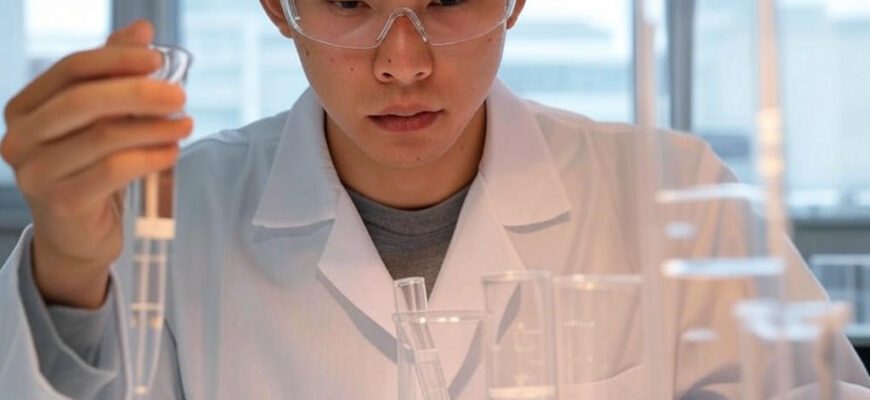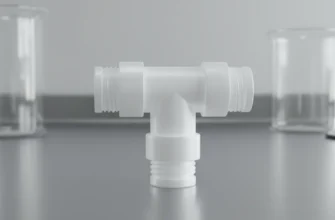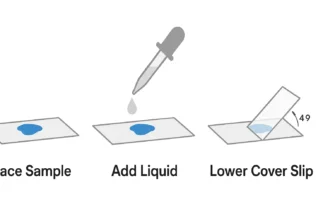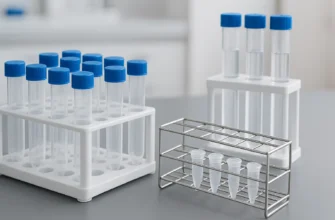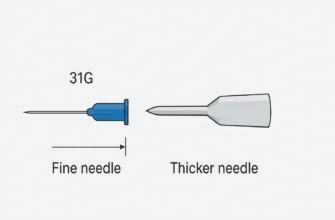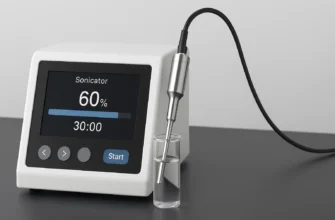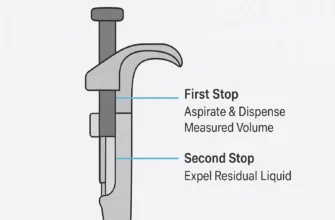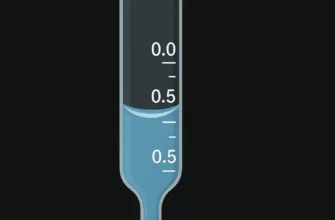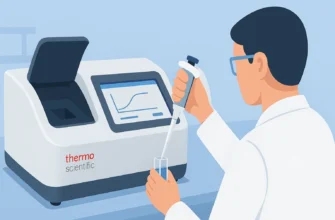Understanding Laboratory Pipettes: Precision in Liquid Transfer and Measurement
The accuracy of liquid measurement and transfer is fundamental to successful laboratory procedures across scientific disciplines. In settings from clinical diagnostics to pharmaceutical research, the ability to precisely contain, deliver, dispense, and drain specific volumes of liquid directly impacts experimental validity and reproducibility. This article explores the various types of pipettes used in laboratory settings, focusing on their specific functions and how proper calibration ensures measurement precision.
Types of Laboratory Pipettes and Their Functions
Volumetric Pipettes: The Gold Standard for Accuracy
Volumetric pipettes, also known as bulb or belly pipettes, represent the highest standard of accuracy in liquid measurement. These pipettes allow extremely accurate measurement to four significant figures, making them the instrument of choice for analytical applications requiring the utmost precision.
Unlike other pipette types, volumetric pipettes feature a distinctive design with a large bulb and a long narrow portion above with a single graduation mark, as they are calibrated for a single, fixed volume. Common volumes include 1, 2, 5, 10, 20, 25, 50, and 100 mL.
When properly used, Class A volumetric glassware delivers more accurate measurements than mechanical alternatives. For example, a Class A 1 mL volumetric pipette has a tolerance of only ±6 μL, while a comparable P1000 micropipette has a tolerance of ±8 μL. This makes volumetric pipettes particularly valuable for:
- Preparing standard solutions with precise concentrations
- Making laboratory solutions from a base stock
- Preparing solutions for titration
- Applications requiring measurement to the nearest hundredth or thousandth of a milliliter
The extreme precision of volumetric pipettes is governed by strict standards. ASTM standard E969 defines the tolerance for volumetric transfer pipettes, with specifications varying by size—from ±0.006 mL for a 0.5 mL pipette to ±0.05 mL for a 50 mL pipette for Class A instruments.
Serological Pipettes: Versatility for Laboratory Work
Serological pipettes are transparent polystyrene instruments primarily used for cell cultures and work with sterile solutions in the milliliter range. Unlike volumetric pipettes, serological pipettes feature multiple graduation marks and are available in volumes of 1, 2, 5, 10, 25, and 50 mL.
These pipettes offer several advantages for certain laboratory applications:
- Compatibility with all common pipettors
- International color coding for easy volume identification
- Printed with both positive and negative scales for versatile measuring
- Available as individually wrapped sterile pipettes or in multi-pipette packages
Serological pipettes excel in applications where contamination prevention is crucial. Many laboratory professionals prefer serological pipettes over micropipettes when working with containers where immersion might be necessary, as the individually wrapped sterile pipettes provide greater confidence in maintaining sterility.
The accuracy of serological pipettes is also well-defined. For example, a 25 mL serological pipette typically has a tolerance of ±500 μL (±2%), while a 50 mL pipette has a tolerance of ±1000 μL (±2%).
Micropipettes: Precision for Small Volumes
Micropipettes represent a revolution in laboratory liquid handling since their invention by German physician Heinrich Schnitger in the 1950s and subsequent mass production by Eppendorf in the 1960s. These precision instruments feature a spring-loaded piston and removable plastic tip, offering several advantages:
- Adjustable volume settings, unlike fixed-volume volumetric pipettes
- Ability to work with very small volumes (down to fractions of a microliter)
- Accuracy typically within 3% of the desired measurement
Micropipettes are particularly valuable when working with precious samples or when many repetitive measurements are needed. However, for optimal accuracy, users should select the appropriate pipette size for the volume being measured—the error remains relatively constant regardless of volume, resulting in a smaller percentage error when measuring closer to the pipette’s maximum capacity.
Transfer Pipettes: Simplicity for Basic Applications
Transfer pipettes (also called Pasteur pipettes or droppers) are simple disposable plastic tools used for rough volume measurements or bulk transfers of liquids. These consist of a long, slender tube and a molded bulb that can be compressed and relaxed to remove or dispense liquid.
While not designed for high-precision work, transfer pipettes serve important functions in the laboratory:
- Rough volume measurements when precision is less critical
- Bulk transfers of liquids between containers
- Applications where contamination between samples must be avoided
- Dispensing liquids drop by drop (typically 15-50 μL per drop, depending on the pipette type)
These pipettes are often included in laboratory kits and are available with either graduated or smooth barrels, providing a cost-effective solution for basic liquid handling needs.
Principles of Liquid Delivery and Containment
To Deliver vs. To Contain: Critical Distinctions
Laboratory pipettes operate on two fundamental principles that determine how they handle liquids:
- “To Deliver” (TD): Most volumetric and serological pipettes are calibrated to deliver a specific volume of liquid. This means they are designed to dispense their entire contents minus a small amount that remains in the tip due to surface tension and adhesion forces. The calibration accounts for this residual liquid, ensuring the delivered volume is accurate.
-
“To Contain” (TC): Some measuring devices are calibrated to contain a specific volume rather than deliver it. These must be rinsed with additional liquid to ensure complete transfer of the measured volume.
Understanding which principle applies to a particular pipette is essential for accurate measurement.
Drainage and Dispensing Mechanics
The physical properties that govern liquid dispensing from pipettes include:
- Surface tension: The cohesive forces between liquid molecules that create resistance to flow
- Adhesion: The attraction between the liquid and the pipette material
- Gravity: The force that pulls the liquid downward during dispensing
For volumetric pipettes, complete drainage typically involves touching the tip to the wall of the receiving vessel at a 45° angle, allowing air to enter above the liquid column and facilitate flow. The waiting time after dispensing is also crucial—users should follow manufacturer recommendations for how long to wait after the apparent cessation of flow to ensure proper delivery.
With serological pipettes, delivery mechanics vary based on the pipettor used and whether the pipette is designed to deliver the last drop. Some serological pipettes retain the last drop in the tip, while others are designed to be blown out to deliver the complete volume.
Calibration and Accuracy in Pipetting
Understanding Accuracy Parameters
Pipette accuracy is typically expressed in two complementary measures:
- Systematic error (accuracy): The consistent difference between the measured and actual values. This is often expressed as a percentage of the nominal volume or as an absolute value (e.g., ±0.006 mL).
-
Random error (precision): The variation in repeated measurements under the same conditions, expressed as coefficient of variation (CV).
For example, micropipettes typically offer accuracy within a few percent points (<3% of the desired measurement), while Class A volumetric pipettes provide more stringent tolerances defined by international standards.
Calibration Methods and Frequency
Regular calibration is essential to maintain pipette accuracy. The gravimetric method is the most common calibration approach:
-
Record water temperature (for density calculation)
-
Pre-rinse pipette tips to equilibrate
-
Weigh dispensed water on an analytical balance
-
Apply a Z-factor (temperature correction) to calculate the actual volume delivered
-
Compare with the theoretical volume to determine accuracy
Calibration frequency recommendations vary, but most experts suggest:
- Formal calibration every 6-12 months
- Additional verification before critical measurements
- More frequent checks for heavily used pipettes
Some laboratories implement daily verification using water and a scale for pipettes used in GMP facilities, ensuring consistent performance.
Environmental Factors Affecting Accuracy
Several environmental and operational factors can influence pipetting accuracy:
- Temperature: Changes in temperature affect liquid density and can cause thermal expansion/contraction of both the liquid and pipette components
- Atmospheric pressure: Though less significant than temperature, pressure changes can impact pipette accuracy, particularly for volatile liquids
- Evaporation: Especially critical for small volumes, where evaporation can significantly alter the delivered volume
In nanofluidic applications, evaporation becomes a particularly significant source of error due to the ultra-small volumes being processed. Research has shown that suppressing air flow around the sample can reduce evaporation-related measurement errors.
Advanced Techniques for Precise Pipetting
Reverse Pipetting for Challenging Liquids
Standard pipetting involves depressing to the first stop, aspirating liquid, and then depressing to the second stop to dispense. However, for foaming, viscous, or volatile liquids, reverse pipetting offers superior results:
-
Depress the plunger to the second stop before aspiration
-
Aspirate the liquid (which overloads the system with liquid)
-
Dispense by pushing only to the first stop, leaving excess volume in the tip
-
Discard the tip with residual liquid
This technique prevents air bubbles during aspiration and improves accuracy by stopping the pipette chamber from forcing air through the system.
Optimizing Volume Selection for Maximum Accuracy
A key principle of precise pipetting is to work with volumes near the upper end of a pipette’s range. The error remains relatively constant across a pipette’s volume range, resulting in a smaller percentage error at larger volumes:
- Use a P20 for 20 μL rather than a P200
- Use a P200 for 150 μL rather than a P1000
- Use a 1 mL serological pipette for 0.8 mL rather than a 10 mL pipette
This approach minimizes relative error and ensures more consistent results.
Proper Technique Elements
Several technique factors can significantly impact pipetting accuracy:
- Angle: Hold the pipette within 20° of vertical during aspiration so the weight of the liquid sits over the mouth of the tip
- Tip immersion depth: Immerse only 2-3 mm of the tip to avoid drawing liquid onto the outside of the tip
- Pre-wetting: For volatile solutions, pre-wet the tip by aspirating and dispensing the solution 3-5 times before the actual measurement
- Consistent rhythm: Maintain consistent timing for aspiration and dispensing to reduce variability
Emerging Technologies in Precision Liquid Handling
Nanofluidic Measurement Devices
Advances in nanotechnology have led to the development of femtoliter volumetric pipettes and flasks fabricated on glass substrates. These devices can measure volumes as small as 11 femtoliters (fL) with an error of only ±0.06 fL (CV 0.6%).
Unlike macroscale pipettes that rely on gravity, nanofluidic devices utilize surface tension and air pressure control to manipulate ultra-small volumes. These technologies are expanding the boundaries of analytical chemistry by enabling measurements previously considered impossible.
Microfluidic Systems with Integrated Functionality
Recent innovations include pipette-operable microfluidic devices featuring hydrophobic valves for sequential liquid dispensing. These systems can:
- Control flow direction through specialized valves
- Sequentially dispense liquids into multiple reaction chambers
- Operate with various biological fluids including BSA, DMEM, FBS, plasma, and blood
- Function with standard laboratory equipment like pipettes, syringes, or droppers
Such technologies are particularly valuable for point-of-care testing applications, where they can facilitate multiplex disease assays without requiring specialized equipment.
Volumetric Absorptive Microsampling
Volumetric absorptive microsampling (VAMS) represents another innovative approach, particularly for biological samples. This technique:
- Uses a specialized device to collect a precise volume (e.g., 20 μL) of blood or plasma
- Allows the sample to dry for stability and easier handling
- Enables simplified sample preparation through methods like dispersive pipette extraction
- Provides outstanding analyte stability (>85% recovery after 2 months at room temperature)
This technology offers significant advantages for forensic and clinical applications where sample volume is limited or where simplified collection and processing are desired.
Conclusion
The diverse array of pipetting technologies available to modern laboratories offers solutions for virtually any liquid handling challenge. From the unparalleled accuracy of volumetric pipettes to the convenience of serological pipettes and the versatility of micropipettes, each technology has specific applications where it excels.
Understanding the principles of how different pipettes contain, deliver, dispense, and drain liquids is essential for selecting the appropriate tool for a particular application. Equally important is recognizing the critical role of proper calibration and technique in achieving accurate, reproducible results.
As laboratory science continues to advance, innovative approaches like nanofluidics, microfluidic systems, and volumetric microsampling are pushing the boundaries of what’s possible in precision liquid handling. These technologies promise to further enhance the accuracy, efficiency, and capabilities of laboratories across scientific disciplines.
For researchers and laboratory professionals, maintaining awareness of these pipetting principles and emerging technologies is essential for ensuring experimental validity and advancing scientific discovery through precise, reliable liquid handling.

